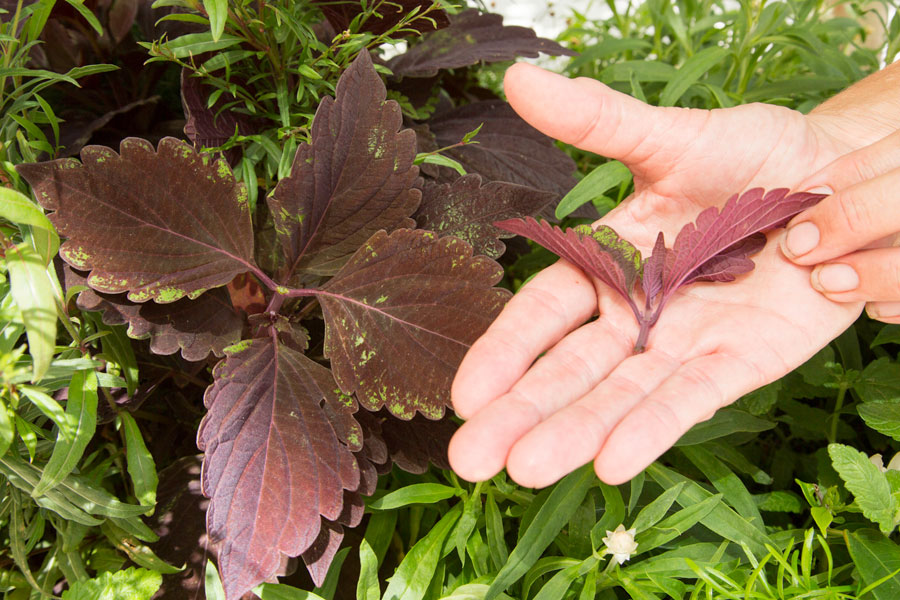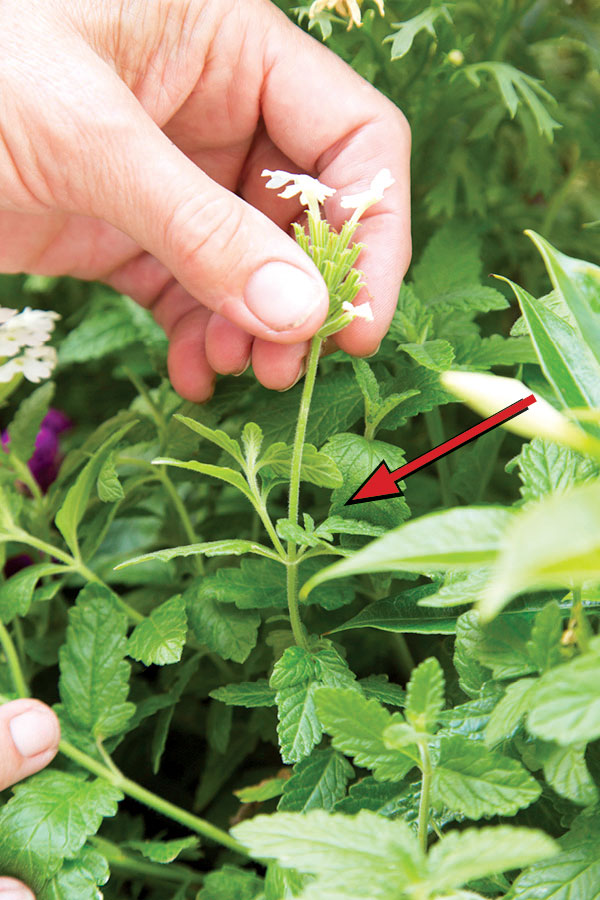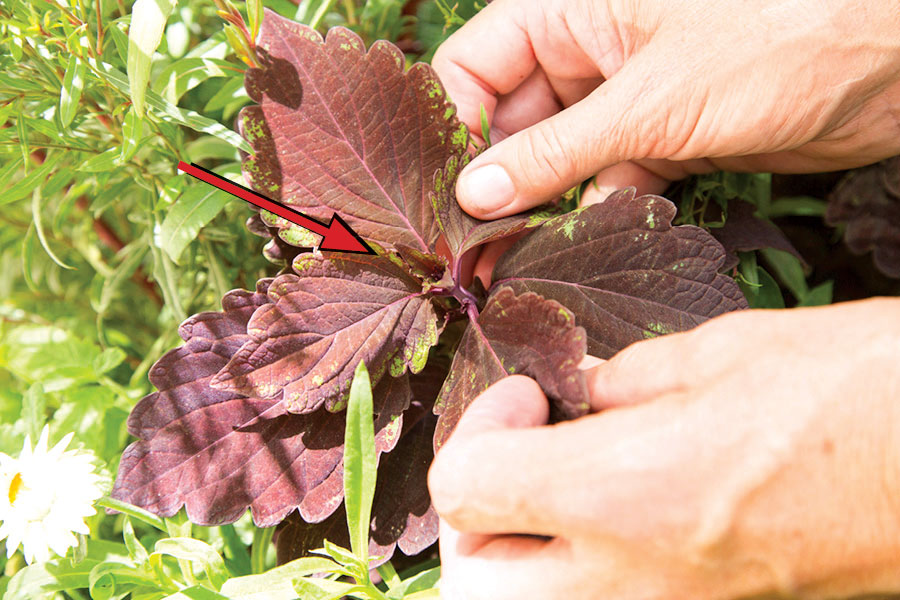August 5, 2015 | Jen Harvey

Schumacher Companies share their expertise with gardeners wondering about this age-old question.
Dead-heading and pinching-back are two pruning concepts that will not only keep your plants tidy but will also ensure that they continue to flower even after their initial blooms are spent. The idea of pruning plants, however, can be intimidating; no one wants to ruin their beautiful plants by incorrectly hacking away at them. As intimidating as pinching-back and dead-heading may seem, however, in truth they are simple concepts to master once you have a basic understanding of plant behavior.
Like all living organisms, plants want to propagate their species. Flowering plants do this by producing a flower that contains both male and female reproductive parts. As bees, butterflies, and even bats are attracted by flowers’ colors and perfumes, they spread the pollen, produced by the male parts, to the female parts of the flower. This fertilizes the plant and initiates the growth of seeds. Once the plant produces these seeds, its job is done and it no longer produces flowers. But if we remove the spent blooms before they have a chance to produce those seeds, we can trick the flower into producing more blooms. Since the plant wants to reproduce, it will continue to produce blooms on secondary shoots in subsequent attempts to produce seeds. Let's look more closely at how this is done.
Dead-heading
Like it sounds, dead-heading is the removal of spent blooms. When the flower begins to fade, remove it by cutting just above the first set of healthy leaves below. In the example of the verbena pictured here, you’ll see that there are small, young leaves a few inches below the spent bloom. Cutting just above those small leaves will cause the plant to direct energy into developing these shoots. These shoots will in turn produce more blooms as the plant makes another attempt to produce seeds. As a consequence, not only will the plant flower more, but the overall shape of the plant will become more full and lush while limiting its height. And your efforts need not only be spent on those flowers in your garden; dead-heading your containers is a great way to increase their lifespan, too.

Pinching-back
Pinching-back is similar to dead-heading but it refers to the removal of the main leaders of foliage plants. In these photos, you can see one of this Coleus’ main branches and the new growth at its tip. By literally pinching off this new growth at the tip down to the young small leaves below, the Coleus will direct its energy into developing those secondary shoots. This Coleus is in a container, and the new shoots it will develop will give the plant a thick and lush appearance while maintaining its low profile, an important consideration since it shares the container with other plants.

It’s also important to remember that not all plants will rebloom after being dead-headed. But since dead-heading is merely the act of removing spent blooms, the process will neaten your garden's appearance while doing no permanent damage to your plants. Of course, in the case of a plant like heliopsis, you may want to leave the seed heads to attract birds who feed on the seeds. But if you like a clean garden, you certainly can't go wrong dead-heading or pinching back. Not only will you promote the growth of more flowers, but you will also make tidy those plants that won't. In the end, the only cost to you will be your time and effort, but the reward will be very worthwhile.


Add new comment